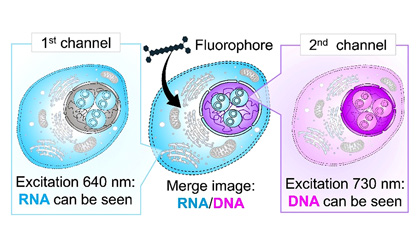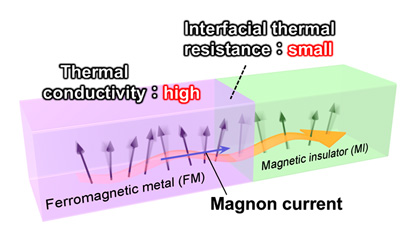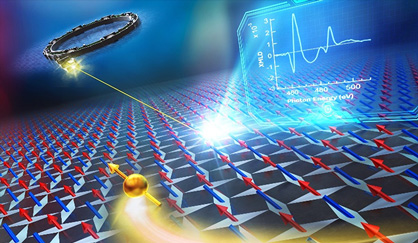Machine Learning-Developed Maps for Discovering New Phases Released
— Proposing 3,000 promising element sets from 80 "elemental reactivity maps" that predict the reactivity of three elements —2025.04.15
NIMS (National Institute for Materials Science)
Graduate School of Frontier Sciences, The University of Tokyo (UTokyo)
National Institute of Advanced Industrial Science and Technology (AIST)
Tohoku University
Kyoto Institute of Technology
In joint research with the University of Tokyo (UTokyo), the National Institute of Advanced Industrial Science and Technology (AIST), Tohoku University, and Kyoto Institute of Technology, the National Institute for Materials Science (NIMS) developed and published "elemental reactivity maps" for discovering new phases. The research team proposed maps that use machine learning to identify over 3,000 element combinations that could potentially form new phases from among a total of 85,320 combinations of up to three elements selected from the 80 elements easily handled in the laboratory. This research result was published in Chemistry of Materials on February 21, 2025.
Abstract
Background
Key Findings
When the prediction results were validated using experimental crystal structure databases that include data on complex crystals and solid solutions, known compounds were 17 times more likely among combinations with high reactivity scores (≥0.95) compared to combinations with low reactivity scores (<0.05), demonstrating the validity of reactivity scores. Since more than 3,000 combinations of elements that exhibit high reactivity scores but are not present in the experimental databases were identified, the maps are expected to serve as a "treasure trove" containing hidden new phases. The research team also successfully discovered several dozen new phases, including the B20-structure alloy Co(Al,Ge), which attracts attention as a potential magnetic skyrmion or thermoelectric material, by actually utilizing these maps.

Figure. Two new phases discovered in a phase discovery experiment based on an elemental reactivity maps.
Future Outlook
Other Information
- This research was conducted by a research team consisting of Yukari Katsura (Senior Researcher, Materials Modeling Group, Data-driven Materials Research Field, Center for Basic Research on Materials, NIMS; also Associate Professor, University of Tsukuba, and Visiting Scientist, RIKEN), Yuki Inada (Graduate School of Frontier Sciences, UTokyo; completed doctoral program in March 2024), Masaya Fujioka (Senior Researcher, AIST), Haruhiko Morito (Associate Professor, Institute for Materials Research, Tohoku University), and Tohru Sugahara (Professor, Faculty of Materials Science and Engineering, Kyoto Institute of Technology), as part of the JST-CREST Project "Development of Innovative Functional Materials Based on Large-Scale Search for New Crystals" (JPMJCR19J1).
- This research result was published in Chemistry of Materials (online version) on February 21, 2025, and in Vol. 37, Issue 6 of the journal on pages 2097–2105 on March 25, 2025 as the cover article of that issue.
Published Paper
Authors : Yuki Inada, Masaya Fujioka, Haruhiko Morito, Tohru Sugahara, Hisanori Yamane, Yukari Katsura
Journal : Chemistry of Materials
DOI : 10.1021/acs.chemmater.4c02259
Publication Date : February 21, 2025
Contact information
Regarding the research
Senior Researcher
Materials Modeling Group
Data-driven Materials Research Field
Center for Basic Research on Materials
National Institute for Materials Science
TEL: +81-29-860-4452
URL: https://researchmap.jp/ykatsura (researchmap)
Senior Researcher
Carbon-Neutral Materials Research Group
Multi-Material Research Institute
National Institute of Advanced Industrial Science and Technology
Specially Appointed Associate Professor
Tohoku University, Core Facility Center
TEL: +81-22-217-6295
URL: https://researchmap.jp/read0138580 (researchmap)
Professor
Faculty of Materials Science and Engineering
Kyoto Institute of Technology
TEL: +81-75-724-7566
URL: https://kit-sugahara-lab.net (Sugahara Laboratory)
For general inquiries
National Institute for Materials Science
TEL: +81-29-859-2026
FAX: +81-29-859-2017
Graduate School of Frontier Sciences
The University of Tokyo
5-1-5 Kashiwanoha, Kashiwa-shi, Chiba 277-8561 Japan
Branding and Public Relations Department
National Institute of Advanced Industrial Science and Technology
1-1-1 Umezono, Tsukuba-shi, Ibaraki 305-8560, Japan
Institute for Materials Research
Tohoku University
2-1-1 Katahira, Aoba-ku, Sendai-shi, Miyagi 980-8577, Japan
TEL: +81-22-215-2144
Kyoto Institute of Technology
Hashikami-cho, Matsugasaki, Sakyo-ku, Kyoto-shi, Kyoto 606-8585, Japan
TEL: +81-75-724-7016
FAX: +81-75-724-7029
Same Keywords
-
Building a Machine Learning Model While Preserving Data Confidentiality
(Machine learning)
2025.03.13
-
AI Capable of Outlining in a Single Chart Information from Thousands of Scientific Papers
(Materials informatics)
2018.09.25
-
Use of Machine Learning to Design Optimal Nanostructures to Control Heat Current in Materials
(Machine learning)
2017.04.18



